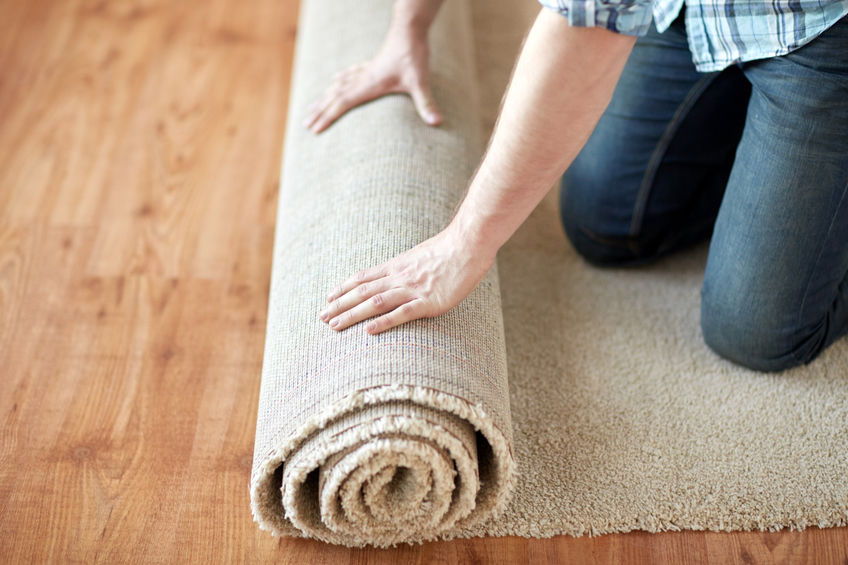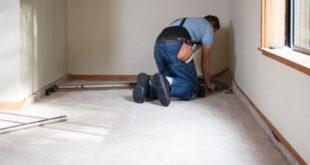Carpet installation is a skill that is developed through years of experience, so using professional installers is just plain smart. Also, understanding the basics of carpet installation will increase your knowledge of the process and enhance your confidence in the professionals working in your home. Some of these basics follow.
Like most home improvement jobs, good preparation is the key to success when it comes to installing carpet. In addition to knowing how to lay carpet, you’ll need to know a bit about carpeting, what measurements to take, and how to get your room ready to roll.
Carpeting is sold in 9-foot, 12-foot and 15-foot widths. If you’re lucky, you’ll be able to install your wall to wall carpet in one seamless piece. If your room is wider than 15 feet or has an L or other shape, try to plan as few seams as possible, and avoid putting seams in high traffic areas.
Start by measuring the room carefully and drawing a floor plan — graph paper helps. Be sure to note any obstructions and indentations, such as a fireplace hearth, doorways, and closets.
Use your floor plan to configure a carpet installation that produces the least amount of waste. Remember many types of carpeting have a weave or “grain” to the carpet fibers that might be apparent if two adjacent pieces of carpeting are installed at right angles to each other.
Next, use your measurements to calculate the amount of carpeting and carpet pad you’ll need. Width times length — in feet — gives you the total square footage. To convert that number to square yards (the typical unit of measurement for carpeting), divide by 9, and round up any fraction.
If your unsure of your carpeting plan, rest easy. The next step is to take your measurements and plan to a carpet dealer. They should be able to check over your work and make any adjustments if needed. They can also give you invaluable tips on how to install carpet.
Depending on the type of carpet you buy and the kind of subfloor (wood, concrete) you’re covering, your dealer will be able to figure the correct amount and type of edge tack strip you’ll need. Bring exact measurements for door openings so you can get door edgings strips, too.
Your dealer may rent knee kickers. If not, get one at your local tool rental shop.
Before installing your carpeting, get the room ready. Carpeting can be installed over hardwood flooring that’s securely nailed, but old carpet (including padding and tack strips) should be removed. Completely remove old ceramic tile and tile backer board.
Inspect the subfloor for loose or missing nails, and silence squeaks with ring shank nails driven into joists. Fill any large cracks and depressions with latex patching compound. Remove floor register covers and interior doors.
Carpeting requires an underlayment, or a padding layer between your carpet and the subfloor below. Carpet pads help prolong the life of your carpeting by giving it a smooth, forgiving surface to sink into when you walk across it. Depending on the condition of your subfloor, you may also need a fresh vapor barrier and plywood installed to further protect your new carpeting.
Note that if your new carpeting is thicker than the flooring material you had before, doors might not swing freely when you reinstall them. If that’s the case, you’ll have to trim the bottom of the door so it works properly.
You can butt the edges of your carpet right to your base molding, but if you have base shoe, you might want to remove it and then reuse it to disguise any gaps at the edges of your carpet installation.
Source: https://www.diynetwork.com/how-to/rooms-and-spaces/floors/what-you-need-to-know-before-installing-carpet
 Carpet Guides All About Carpet Installing
Carpet Guides All About Carpet Installing 


Upgrading your floors is one of the best investments and most cost-effective ways that you can make for your home. However, installing a carpet isn’t always as simple as you think. The most important question to ask yourself before installing a carpet is why you need it. Of course, your budget and your lifestyle should be considered.
Nice content and guide that every home owner can follow through before installing carpet.